From - Sky & Telescope,
By - Bob King,
Edited by- Amal Udawatta,
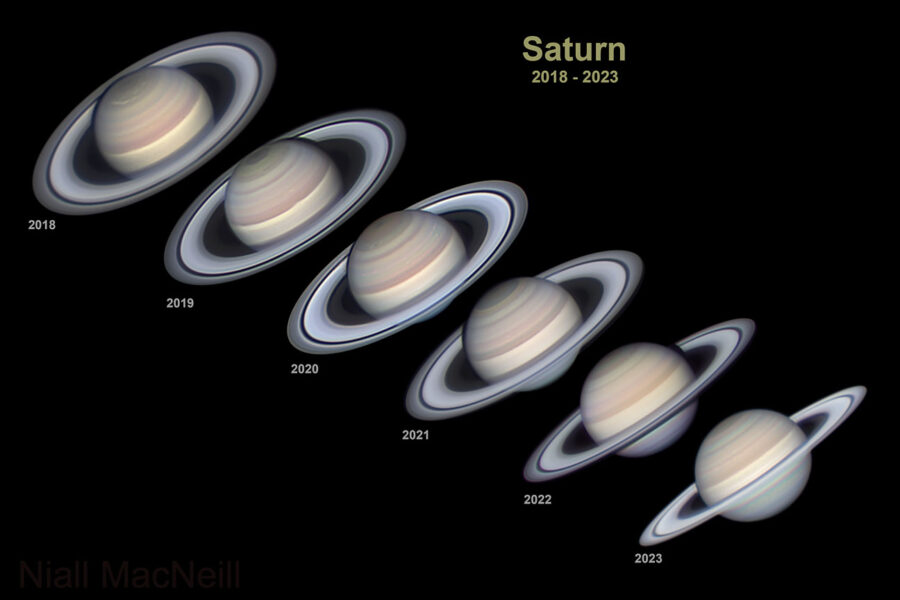
Niall MacNeill
September is Saturn’s time to shine. We also check on Comet Nishimura — now at 5th magnitude and still brightening — and look forward to a dramatic asteroid occultation. Not to mention that Jupiter just took another hit.
Saturn's return to the evening sky is always one of the year's most anticipated sights. Most newcomers are surprised at their first look. How many times at a public star party have you heard someone say the planet looks fake? You can't really blame them. The ringed planet has no ready analog in the everyday world. What's this — a ball surrounded by a levitating ring? Looking through my telescope one night, someone remarked that the planet looked like an emoji, which made me laugh because they were dead-on. Saturn is alienness perfected. Its unique appearance makes it a guaranteed "wow" getter.
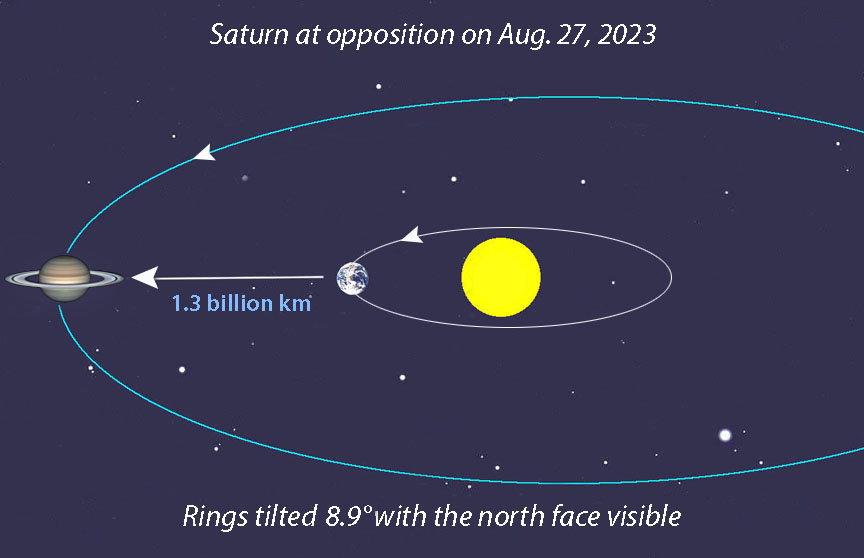
Bob King with Saturn image by Christopher Go
The ringed planet reached opposition on August 27th, shining at magnitude +0.4 with a disk 19″ across and rings extending their girth to 44″. Saturn is nearly as big and bright this month with the advantage of being higher up in the sky at nightfall. Many amateurs have commented on the narrow, edgy tilt of the rings this apparition compared to last year when they were fanned out at nearly 14°. While closing rings make it easier to see dimmer moons close to the planet (due to less scattered light), spotting Cassini's Division, the apparent 4,800-kilometer-wide gap between the A and B rings, has become a challenge. So far this summer I've seen it flicker into view in my 10-inch Dob on just a few occasions.
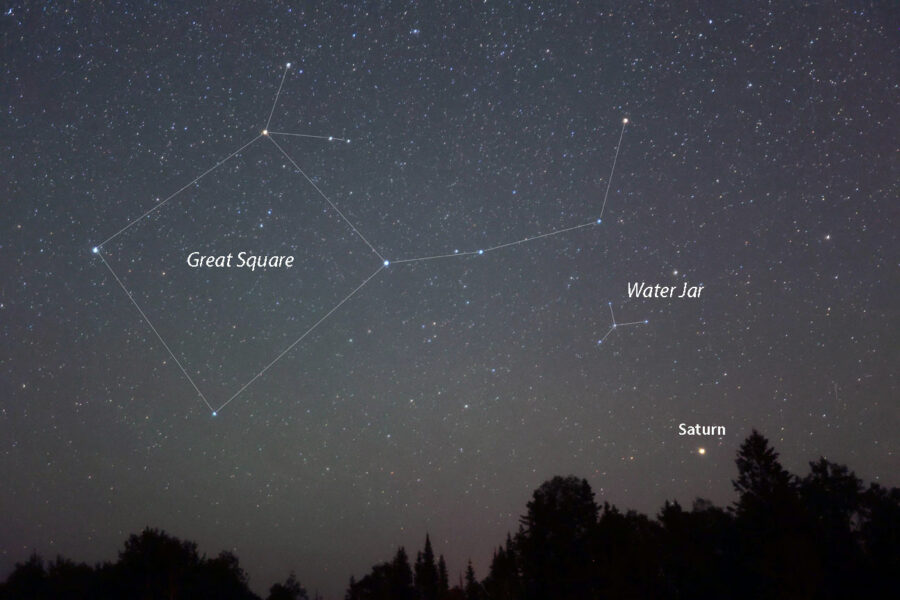
Bob King
For the same reason the innermost C ring may require concentration and good conditions to discern. Look for a filmy, gray glow interior to the B ring contrasting with the dark gap just above the planet's disk. You might also glimpse its presence as a fuzzy gray stripe bordering the northern edge of the shadow cast by the rings on the planet's cloud tops. Around opposition Saturn's shadow remains well hidden behind the planet's globe. Keep watch! It will return in the coming weeks as it pivots eastward and nibbles its way into the rings where they pass behind the planet. The shadow's return enhances Saturn's 3D appearance.
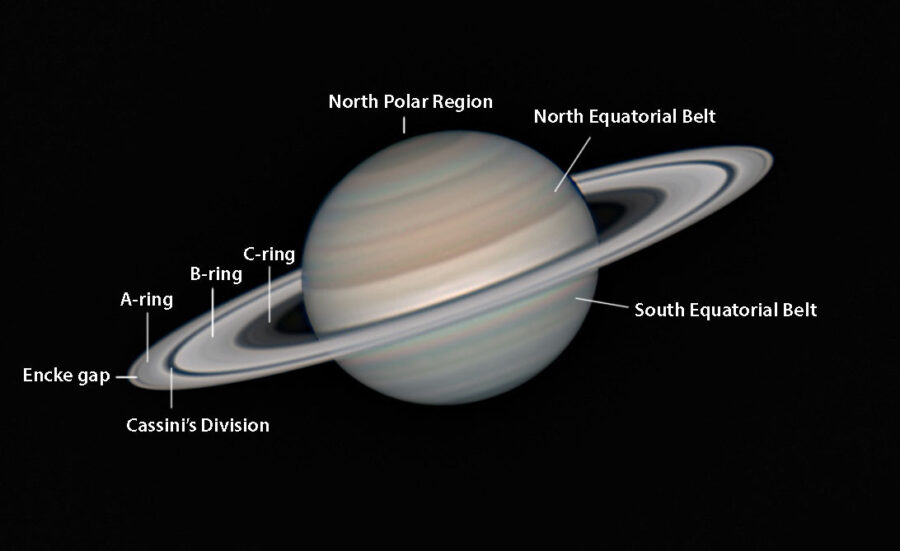
Damian Peach
The North Equatorial Belt is still the planet's most prominent atmospheric feature in a small telescope. In 8-inch and larger instruments additional temperate belts and the gray cap of the North Polar Region appear in excellent seeing. With the closing of the rings, Saturn's southern hemisphere finally peeks back into view. Try spotting the South Equatorial Belt located immediately south of the ring plane. Planetary imager Christopher Go recorded an unusual disturbance there in images taken in late August.
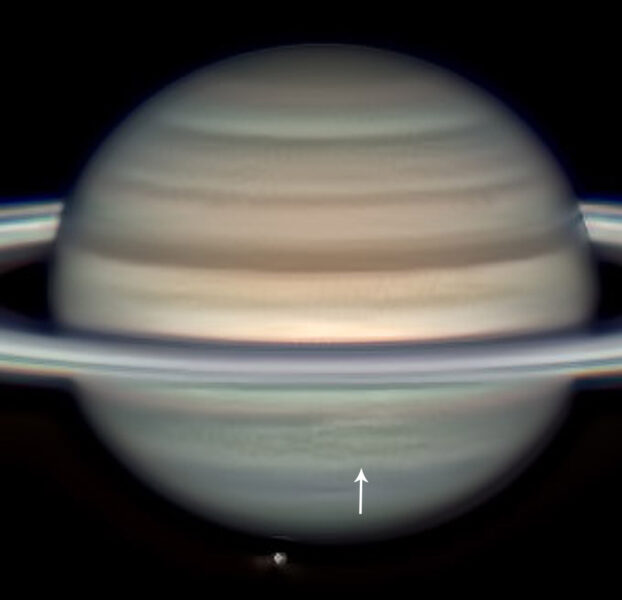
Christopher Go
Saturn has generally lagged behind Jupiter in its total number of known moons. But with a flurry of recent new discoveries its tally now stands at 146 compared to Jove's 95. Five Saturnian moons are typically visible in a 6-inch scope — Titan (magnitude 8.4), Rhea (9.8), Tethys (10.3), Dione (10.5), and Iapetus. The last has a split personality with one hemisphere covered in bright, reflective ice and the other in dark, organic compounds. Because it's tidally locked to Saturn (in a 79-day orbit), we always see the bright side at western elongation — when Iapetus is an easy catch at magnitude 10.2 — and the dark side at eastern elongation — when it dims to 11.9. Larger telescopes at high magnification will show Enceladus (11.8), distant Hyperion (14.3), and Mimas (13.0), which orbits so close to the planet it's difficult to pull from the glare.
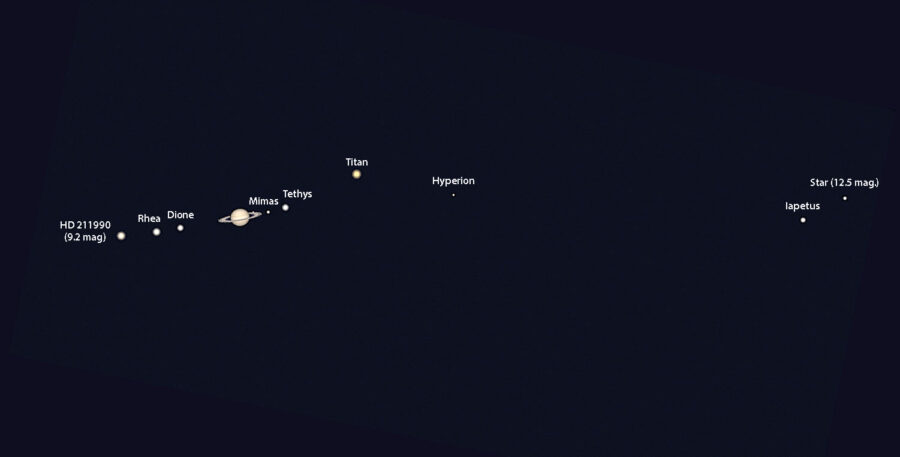
Stellarium
On September 9th Iapetus reaches western elongation and shines at peak brightness. It reaches the other end of its orbit (eastern elongation) on October 18th and finally completes the cycle on November 27th when it once again stands at western elongation. You can use Sky & Telescope's Saturn moons finder to locate the planet's five brightest satellites any time of night you like. A phone app like Sky Safari or the free desktop planetarium program Stellarium will show the location of all moons visible with the largest amateur telescopes.
COMET NISHIMURA'S SPECTACULAR TAIL
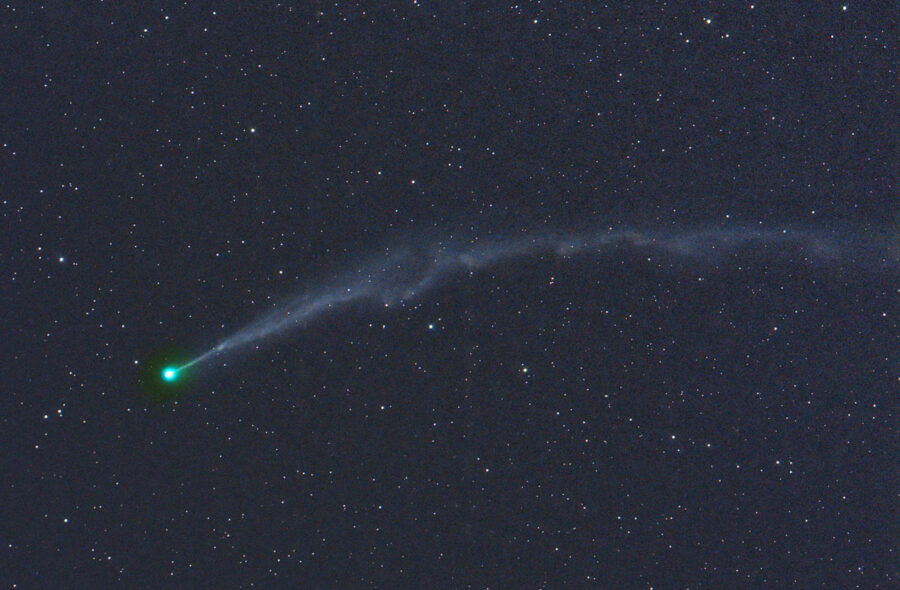
Gerald Rhemann
Comet Nishimura (C/2023 P1) is still tearing up the dance floor as it approaches its September 17th perihelion. I last observed it on September 5th in last-quarter moonlight. Even in 10×50 binoculars the bright, fuzzy head was easy to spot, trailed by a short, westward-pointing tail visible with averted vision. Through a 15-inch telescope the coma was small (3′) and strongly condensed with a pleasing blue-green color from carbon emission. The tail emerging near the head was bright, straight, and pencil-thin. Farther out it expanded and looked fluffier with a total length of ~45′. I was able to keep the comet in view in both telescope and binoculars until 5:30 a.m. — a half-hour into morning twilight. Its overall magnitude was around 5.5.

Michael Jaeger
Although I'm aware that accomplished astrophotographers can pull off amazing views of objects even under the worst of conditions I was wonderstruck looking at recent photos from Michael Jaeger and Gerald Rhemann. Their work beautifully illustrates the dynamic interaction of the solar wind and the comet's ion tail and reminds me why I like comets so much. You'll find a steady stream of fresh images on the ICQ Comet Observations page on Facebook.
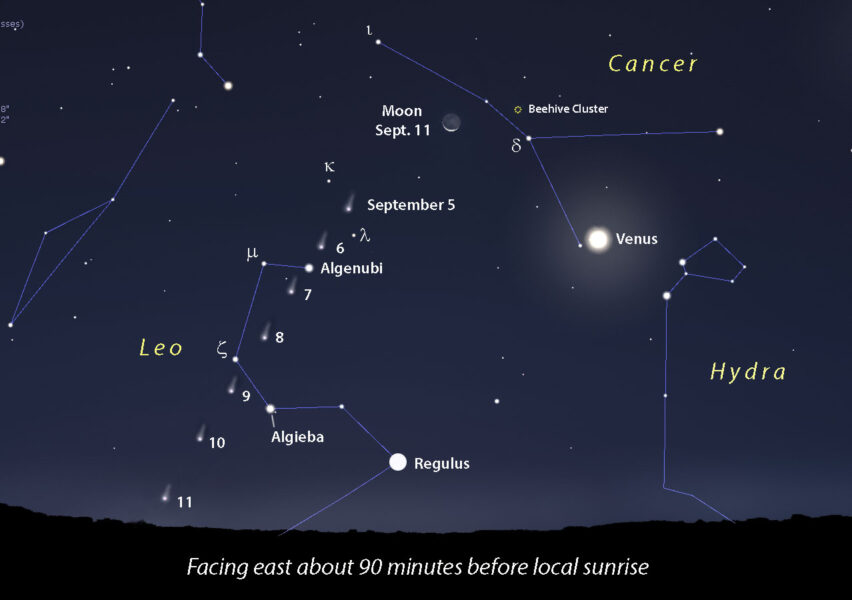
Stellarium with additions by Bob King
In my previous post I included maps for locating Comet Nishimura. While those will still work perfectly well, I wanted to include a more realistic chart showing how the comet appears in a real-life setting. As you can infer from the map an unobstructed horizon is crucial. Interference from a bright Moon will be a bit of a bother until about September 8th. Plan to be out about 2 hours before sunrise to anticipate the comet's appearance. The window of observation before twilight encroachment will be brief — only about 20–25 minutes. Binoculars will help pinpoint its location but do bring a telescope for a closer look. You won't be disappointed.
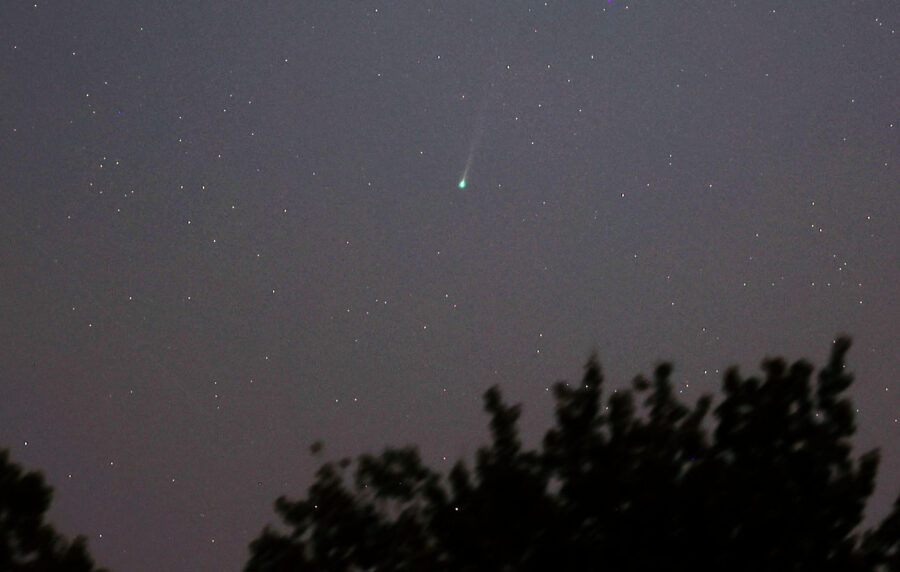
Bob King
IMPACT AT JUPITER!
The biggest planet has just taken another hit. In what appears to be the 12th recorded Jovian impact Japanese amateur astronomers Tsutomu Ishibashi and Satoshi Ota captured the flash at 16:45:57 UT on August 28, 2023, at Jovian latitude 45° north and system II longitude 128°. Another observer visually observed the smash-up on a monitor between photo shoots. In all there have been at least seven independent observations of the event, making it one of the most widely observed impacts. Images taken in methane light 42 minutes after the strike failed to show evidence of a dark impact "scar" like those recorded during several previous Jupiter collisions indicating that whatever it was that struck the planet was very small. Further observations and photos are available at ALPO Japan.
September is Saturn’s time to shine. We also check on Comet Nishimura — now at 5th magnitude and still brightening — and look forward to a dramatic asteroid occultation. Not to mention that Jupiter just took another hit.

Niall MacNeill
Saturn's return to the evening sky is always one of the year's most anticipated sights. Most newcomers are surprised at their first look. How many times at a public star party have you heard someone say the planet looks fake? You can't really blame them. The ringed planet has no ready analog in the everyday world. What's this — a ball surrounded by a levitating ring? Looking through my telescope one night, someone remarked that the planet looked like an emoji, which made me laugh because they were dead-on. Saturn is alienness perfected. Its unique appearance makes it a guaranteed "wow" getter.

Bob King with Saturn image by Christopher Go
The ringed planet reached opposition on August 27th, shining at magnitude +0.4 with a disk 19″ across and rings extending their girth to 44″. Saturn is nearly as big and bright this month with the advantage of being higher up in the sky at nightfall. Many amateurs have commented on the narrow, edgy tilt of the rings this apparition compared to last year when they were fanned out at nearly 14°. While closing rings make it easier to see dimmer moons close to the planet (due to less scattered light), spotting Cassini's Division, the apparent 4,800-kilometer-wide gap between the A and B rings, has become a challenge. So far this summer I've seen it flicker into view in my 10-inch Dob on just a few occasions.

Bob King
For the same reason the innermost C ring may require concentration and good conditions to discern. Look for a filmy, gray glow interior to the B ring contrasting with the dark gap just above the planet's disk. You might also glimpse its presence as a fuzzy gray stripe bordering the northern edge of the shadow cast by the rings on the planet's cloud tops. Around opposition Saturn's shadow remains well hidden behind the planet's globe. Keep watch! It will return in the coming weeks as it pivots eastward and nibbles its way into the rings where they pass behind the planet. The shadow's return enhances Saturn's 3D appearance.

Damian Peach
The North Equatorial Belt is still the planet's most prominent atmospheric feature in a small telescope. In 8-inch and larger instruments additional temperate belts and the gray cap of the North Polar Region appear in excellent seeing. With the closing of the rings, Saturn's southern hemisphere finally peeks back into view. Try spotting the South Equatorial Belt located immediately south of the ring plane. Planetary imager Christopher Go recorded an unusual disturbance there in images taken in late August.

Christopher Go
Saturn has generally lagged behind Jupiter in its total number of known moons. But with a flurry of recent new discoveries its tally now stands at 146 compared to Jove's 95. Five Saturnian moons are typically visible in a 6-inch scope — Titan (magnitude 8.4), Rhea (9.8), Tethys (10.3), Dione (10.5), and Iapetus. The last has a split personality with one hemisphere covered in bright, reflective ice and the other in dark, organic compounds. Because it's tidally locked to Saturn (in a 79-day orbit), we always see the bright side at western elongation — when Iapetus is an easy catch at magnitude 10.2 — and the dark side at eastern elongation — when it dims to 11.9. Larger telescopes at high magnification will show Enceladus (11.8), distant Hyperion (14.3), and Mimas (13.0), which orbits so close to the planet it's difficult to pull from the glare.

Stellarium
On September 9th Iapetus reaches western elongation and shines at peak brightness. It reaches the other end of its orbit (eastern elongation) on October 18th and finally completes the cycle on November 27th when it once again stands at western elongation. You can use Sky & Telescope's Saturn moons finder to locate the planet's five brightest satellites any time of night you like. A phone app like Sky Safari or the free desktop planetarium program Stellarium will show the location of all moons visible with the largest amateur telescopes.
COMET NISHIMURA'S SPECTACULAR TAIL

Gerald Rhemann
Comet Nishimura (C/2023 P1) is still tearing up the dance floor as it approaches its September 17th perihelion. I last observed it on September 5th in last-quarter moonlight. Even in 10×50 binoculars the bright, fuzzy head was easy to spot, trailed by a short, westward-pointing tail visible with averted vision. Through a 15-inch telescope the coma was small (3′) and strongly condensed with a pleasing blue-green color from carbon emission. The tail emerging near the head was bright, straight, and pencil-thin. Farther out it expanded and looked fluffier with a total length of ~45′. I was able to keep the comet in view in both telescope and binoculars until 5:30 a.m. — a half-hour into morning twilight. Its overall magnitude was around 5.5.

Michael Jaeger
Although I'm aware that accomplished astrophotographers can pull off amazing views of objects even under the worst of conditions I was wonderstruck looking at recent photos from Michael Jaeger and Gerald Rhemann. Their work beautifully illustrates the dynamic interaction of the solar wind and the comet's ion tail and reminds me why I like comets so much. You'll find a steady stream of fresh images on the ICQ Comet Observations page on Facebook.

Stellarium with additions by Bob King
In my previous post I included maps for locating Comet Nishimura. While those will still work perfectly well, I wanted to include a more realistic chart showing how the comet appears in a real-life setting. As you can infer from the map an unobstructed horizon is crucial. Interference from a bright Moon will be a bit of a bother until about September 8th. Plan to be out about 2 hours before sunrise to anticipate the comet's appearance. The window of observation before twilight encroachment will be brief — only about 20–25 minutes. Binoculars will help pinpoint its location but do bring a telescope for a closer look. You won't be disappointed.

Bob King
IMPACT AT JUPITER!
The biggest planet has just taken another hit. In what appears to be the 12th recorded Jovian impact Japanese amateur astronomers Tsutomu Ishibashi and Satoshi Ota captured the flash at 16:45:57 UT on August 28, 2023, at Jovian latitude 45° north and system II longitude 128°. Another observer visually observed the smash-up on a monitor between photo shoots. In all there have been at least seven independent observations of the event, making it one of the most widely observed impacts. Images taken in methane light 42 minutes after the strike failed to show evidence of a dark impact "scar" like those recorded during several previous Jupiter collisions indicating that whatever it was that struck the planet was very small. Further observations and photos are available at ALPO Japan.
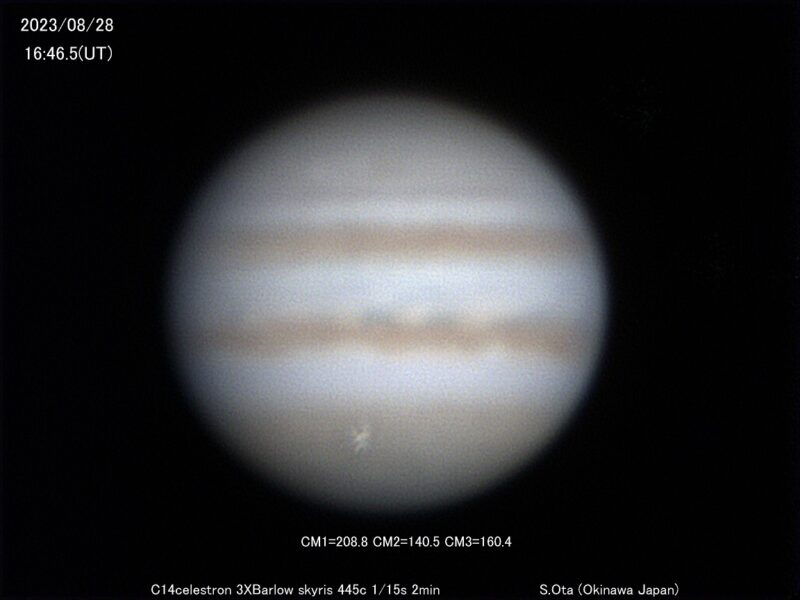
Satoshi Ota, courtesy of ALPO Japan
If you were imaging Jupiter around the time of impact and recorded the sight please contact Marc Delcroix, Ricardo Hueso, and Isshi Tabe at their respective email addresses:
delcroix.marc at free.fr
ricardo.hueso at ehu.eus
isshi7717 at yahoo.co.jp
INTERAMNIA OCCULTATION WIDELY VISIBLE ACROSS U.S.
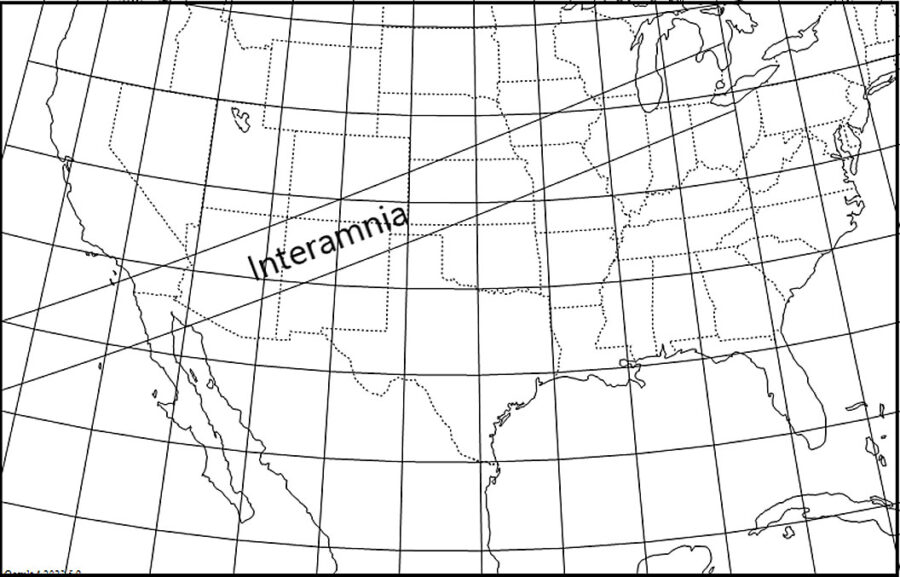
IOTA
When was the last time you witnessed an asteroid occulting a star? On September 13th at around 10:16 UT (6:16 EDT), observers within a broad path from southern California to lower Michigan will see the large 12th-magnitude asteroid (704) Interamnia occult a 9th-magnitude star in Auriga for up to 17 seconds. The target star will fade nearly 3 magnitudes, making for a dramatic sight in telescopes as small as 4 inches. The International Occultation Timing Association (IOTA) is treating the occultation as an opportunity to bring new observers into the fold. There's also a possibility of discovering a small moon orbiting Interamnia by coordinating observations outside the main path. Curious? Find maps and more details at the IOTA observation campaign.
Comments
Post a Comment